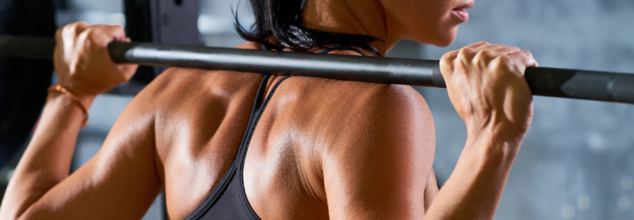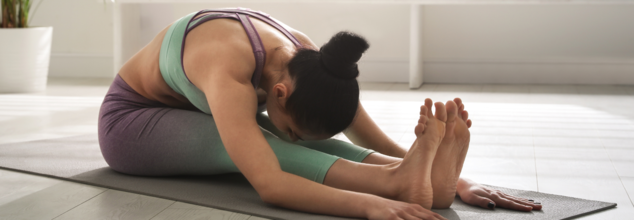- Health Conditions A-Z
- Health & Wellness
- Nutrition
- Fitness
- Health News
- Ayurveda
- Videos
- Medicine A-Z
- Parenting
- Web Stories
Looking To Build Muscles, But Falling Short? Your Metabolism Could Be The Culprit

(Credit-Canva)
Usually, people who go to the gym or start working out regularly have one goal in mind- either to lose weight, or to gain muscles or simple to stay fit. While there are many ways for a person to lose weight and the process for it is usually very straightforward, but gaining weight and muscle is a lot more complicated and difficult for people. But why? What is the one thing that lean people have working against them in this case? Metabolism.
While some people have difficulty losing weight because of their slow metabolism, others have a much more difficult time in a different way. It is a double-edged sword for people who wish to gain muscle because their body’s high metabolism breaks things down very easily.
What Role Does Metabolism Play In Weight Gain?
Metabolism is the amazing process by which your body converts the food and drinks you consume into the energy you need to live and thrive. It's a complex network of chemical reactions happening in your cells every single second, powering everything from breathing and moving to healing and growing. Think of it as the engine that keeps your body running smoothly. Your metabolism is responsible for using the energy from your food to fuel everything your body does. It's a 24/7 operation, working even while you rest or sleep. Here are some key functions it supports
It helps in breathing, circulating blood, digesting food, growing and repairing cells, managing hormones, and regulating body temperature. A healthy metabolism allows your body to adapt to different situations, such as eating, fasting, exercising, illness, injury, pregnancy, and breastfeeding. This means your metabolism isn't always working at the same speed, it adjusts to your body's needs.
High Metabolism And Muscle Gain
When you need to gain muscle, you need to gain weight. According to Healthline to gain muscle, you need to eat enough calories and the right nutrients, especially protein. Building muscle requires a combination of proper nutrition and exercise. It's like giving your body the right building blocks and then telling it what to build. Protein is essential because it provides the building blocks (amino acids) your body uses to create new muscle tissue.
To understand how you gain muscle, visualize this, when you lift weights, you're actually creating tiny tears in your muscle fibers. Your body then repairs these tears, building the muscle back stronger and bigger. This process is fueled by the food you eat. So, weight training stimulates muscle growth, and food provides the necessary materials.
But for people who have high metabolism, they burn through calories much more quickly. According to Harvard health, slim people are usually more active in their daily routines than those who are overweight. One reason might be that they tend to fidget more, meaning they move around even when they're not intentionally exercising. We don't know for sure if this is something people are born with or something they learn, but all that extra movement can burn a lot of calories. It might seem surprising, but overweight people actually burn more calories than slim people when they're doing the same activity. This is because it takes more energy for them to move. However, they also tend to be less active overall, which makes it harder for them to lose weight.
Ways You Can Slow Down Your Metabolism To Gain Muscle
Eat Calorie-Rich Foods Intentionally
Don't just eat more, eat smarter. Focus on calorie-dense foods like rice, bread, pasta, and other carbohydrates. These provide your body with readily available energy. Carbs are key for weight gain, more so than fats.
Track Your Caloric Intake
Feeling full doesn't always mean you're getting enough calories. Calculate your daily calorie needs using online calculators. This helps ensure you're consuming enough for your goals and identifies good food sources.
Boost Your Appetite
A low appetite can hinder your weight gain efforts. If you struggle to eat enough, consult a doctor. They can give you advice and may recommend medically approved appetite stimulants if necessary.
Add Extra Calories to Your Meals
Sneak in extra calories by making small additions to your favorite meals. Switch from water to milk, add toppings like bananas or peanut butter, or include healthy fats like butter, ghee, or olive oil.
Add Protein Supplements to Your Diet
Protein supplements are a convenient way to boost your calorie and protein intake, especially if you have a busy lifestyle. They are readily available and can help you reach your daily goals.
Include Specific Exercises in Your Daily Routine
While exercise generally boosts metabolism, the right kind can help slow it down for weight gain. Consider low-intensity cardio, strength training with lower reps, shorter workouts, longer rest periods, and stretching.
Japanese Walking Is The New Low-Impact Fitness Trend For Healthy Heart

Credits: Canva
Interval Walking Training (IWT), often referred to as “Japanese walking,” offers a safe and sustainable way to improve your fitness without stepping into a gym. Developed by Japanese researchers to target cardiometabolic health in older adults, IWT blends short bursts of brisk walking with periods of slower recovery walks — making it an ideal choice for people across age groups and fitness levels.
What Sets Interval Walking Apart?
Unlike traditional walking, which is usually done at a steady pace, IWT alternates between fast and slow intervals. The recommended protocol involves five sets of 3 minutes of brisk walking followed by 3 minutes of slower walking, totaling 30 minutes of exercise. This is typically done five days a week.
What makes IWT stand out is its ability to deliver significant improvements in physical and metabolic health markers without the strain often associated with high-intensity workouts like HIIT (High-Intensity Interval Training). While HIIT focuses on intense bursts of activity and is popular for its efficiency, it can be too demanding or injury-prone for some, particularly beginners or older adults. IWT, in contrast, keeps the intensity manageable while still pushing the body enough to trigger measurable benefits.
The Evidence Behind the Benefits
The benefits of IWT are well-documented. A 2009 study published in Mayo Clinic Proceedings tested the approach on over 200 adults with an average age of 63. The results were promising: participants experienced notable improvements in blood pressure, body mass index (BMI), blood glucose levels, aerobic capacity, and muscle strength. Importantly, these health gains were achieved without overtaxing the body, making IWT a realistic and maintainable option.
Adherence was also high—more than 95% of the participants stuck with the program throughout the study, suggesting that it’s not just effective but sustainable. This is particularly relevant given how often people abandon overly strenuous fitness programs.
A more recent 2024 review also reinforced these findings. The review confirmed that IWT benefits both healthy individuals and those with metabolic conditions, such as type 2 diabetes. Compared to continuous walking, it was found to be more effective in improving physical fitness, body composition, and glycemic control.
Starting Small and Building Consistency
One of the best parts about IWT is its adaptability. You don’t need to be an athlete to start. In fact, beginning at a comfortable pace is encouraged. Experts recommend a gradual approach: start with shorter intervals of brisk walking — even 20–30 seconds — followed by a few minutes of slower walking. Over time, as your endurance improves, you can increase the intensity or duration of the brisk segments.
To get the most out of IWT, certain practical tips can make a difference:
- Set realistic goals. Even 15–20 minutes is a good start.
- Monitor your intensity. If you’re breathless but still able to talk in short phrases during the fast intervals, you’re likely in the right zone.
- Choose proper footwear. Comfort is key for consistency.
- Listen to your body. If you feel dizzy or in pain, slow down.
- Track your progress. Whether through a fitness app or simple journaling, tracking helps you stay motivated.
IWT offers a balance between challenge and accessibility, making it an excellent long-term strategy for better health — one step at a time.
Can Yoga Help You Improve Migraine And Headaches?

(Credit-Canva)
The benefits of yoga range from mental as well as physical benefits. People who do yoga often notice changes in their bodies, ranging from reduced body aches, supple movements as well as better strength and flexibility. However, there are also many passive benefits of yoga, like yoga that helps us get rid of chronic conditions or improve symptoms of these issues. One such issue is migraines. While many people believe that there are not many ways to improve migraines, many studies have shown that yoga can definitely help improve the symptoms and increase the quality-of-life people experience.
Migraine is a common and often painful condition, affecting many adults. It's a leading cause of disability worldwide, with some people experiencing severe headaches several times a week. While traditional medicine is important, practices like yoga can also help ease migraine symptoms and improve overall well-being.
How Yoga Can Help With Migraine
Yoga is an ancient practice from India that combines body poses, meditation, and breathing exercises. It's known to reduce stress, anxiety, and depression—all common triggers for migraines. By relaxing tense areas like the neck, head, and shoulders, where we often hold stress, yoga can help prevent migraines or make them less severe.
Yoga can also lower blood pressure and slow your heart rate, which helps your body recover from stressful events like migraine attacks. If you have migraines, it's best to avoid intense or hot yoga styles, such as Bikram yoga, and poses that put strain on your neck.
Simple Yoga Poses to Try
Studies have found these yoga poses can help reduce how often headaches happen and how bad they feel:
Sukshma Vyayama (Gentle Exercises)
This yoga focuses on relaxing your neck, face, and head to ease tension. Try Face Massage by gently rubbing your cheeks, Jaw Exercises by opening and closing your jaw, and Neck Circles by slowly rotating your head. These simple movements help release stress often linked to migraines.
Pada Sanchalanasana (Cycling Yoga Pose)
Lie on your back, then lift and bend one leg as if cycling. Extend it forward, then bend it back towards your chest, inhaling as you lift and exhaling as you pull it in. Keep your heel off the floor. Repeat 10 times forward and 10 backward for each leg to boost circulation and relieve tension.
Hand Stretch Breathing
Stand tall and interlace your fingers at your chest. As you breathe in, stretch your arms straight out in front, twisting your palms outwards. Breathe out as you bring them back. Repeat this 5 times, then repeat another 5 times stretching above your forehead, and finally 5 times stretching towards the ceiling.
Shashankasana (Rabbit Pose)
Sit on the floor with your legs bent back, resting on your feet. Breathe in and raise your hands, stretching upwards. As you breathe out, bend forward, stretching your arms out to touch the ground. Try to touch your nose or chin to the floor, keeping your arms stretched. Repeat 5 to 10 times for gentle relief.
Savasana with Yoga Nidra (Deep Relaxation)
Lie flat on your back, legs straight and arms relaxed. Yoga Nidra is a guided deep relaxation technique that helps you calm your mind and body. Slowly focus on relaxing each muscle, one by one. This practice is excellent for reducing overall stress and supporting recovery from migraine episodes.
Feel Your Headache Is Getting Worse? Try This Yoga Pose For Relief

(Credit-Canva)
Yoga can often seems challenging, but many stretches and regular exercises you may do, could also be part of yoga. Exercises like stretching or warm-up routine are an essential part of yoga that benefits your entire body as a whole. Not only do these benefit your muscles and joints, these yoga positions can also have a positive effect on your brain, heart and psychological health.
One such position is Paschimottanasana or the seated forward bend.
The 'Seated Forward Bend' might look like a simple yoga move, but it's often surprisingly challenging for many people. This is because activities like running and sitting for long periods can make our hips, the backs of our legs, and our lower backs really tight. This simple forward bend can help loosen those areas up, but it's important not to rush or push too hard.
Step-by-Step Guide To Do Paschimottanasana
- Bring both arms up beside your chest, bending your elbows so your forearms are parallel to the floor, palms down. Breathe normally.
- Exhale as you bend forward, arching your spine and drawing your abdomen in, reach your hands to hold your big toes.
- Gently lower your elbows towards the ground and bend your head, bringing your forehead towards your knees.
- Rest your forehead in the space between your knees and hold this final position, breathing normally with slow, rhythmic breaths.
- To return, lift your head, release your toes, gently straighten your back, and bring your hands back to your sides.
Benefits of Paschimottanasana
Getting into this pose takes time and being patient with your body. Instead of trying to look a certain way, focus on finding a version of the stretch that feels right for you. The mental focus on being gentle and patient can be as intense as the stretch itself, teaching us that yoga is about more than just physical effort. Here are some benefits of it.
Spinal Health and Circulation
When you do this deep stretch along your backside, it's like a gentle adjustment for your spine. It can help fix small curves that aren't quite right. Plus, this stretch encourages better blood flow all around your spine, which is good for keeping it healthy and working well.
Abdominal Organ Massage and Relief
The strong squeeze you feel in your belly area during this pose is like a gentle massage for your internal organs. This can really help if you have tummy troubles like constipation or if your digestion feels slow. It can also give a little boost to your liver if it's not feeling its best.
Stretching Key Muscle Groups
This pose is a great way to stretch out important muscles in your body. You'll feel it in the muscles that are closer to the surface and the ones that are deeper in your legs. It also gives a good stretch to your shoulders and all along your back, making them more flexible and less stiff.
Preventing Future Spinal Issues
Doing Paschimottanasana regularly can be like building a defense against future problems with your spine. By keeping it flexible and strong, you're less likely to have those aches and pains come back over and over again. It helps maintain good spinal health in the long run.
Relief from Sciatica and Lower Back Pain
If you've ever had that shooting pain down your leg called sciatica, or just regular lower back pain, this pose can offer some comfort. The stretch can help to ease the pressure on the nerves that cause these issues, bringing a bit of relief to those sore areas.
Cultivating Inner Qualities
Practicing this pose consistently isn't just about the physical stretch. It can also help you develop important inner feelings. Holding the pose can teach you to let go, to be more dedicated to your practice, and to commit to taking care of your body and mind.
© 2024 Bennett, Coleman & Company Limited

